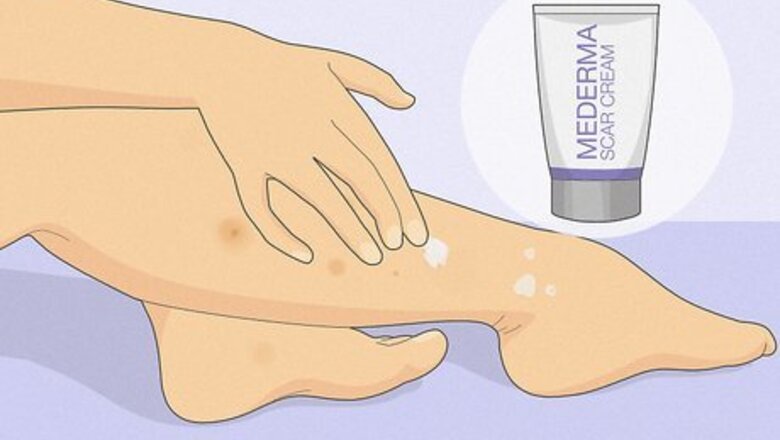
views
- Use over-the-counter treatments and home remedies such as scar-reducing creams or gels, silicone sheets, vitamin E oil, and aloe.
- Try a medical treatment for best results, such as dermabrasion, chemical peels, laser treatments, dermal fillers, or surgical procedures.
- Keep wounds clean and moist and protect your skin with sunscreen to promote healing and prevent scars from forming.
Over-The-Counter Products for Scars
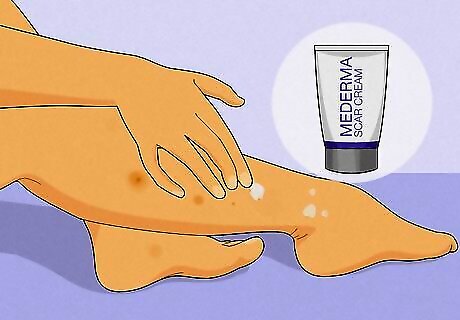
Try scar-reducing creams and gels. There are many over-the-counter products that claim to reduce the appearance of (or even completely remove) scars. Whether these products will work for you, however, will often depend on the type and severity of your scarring. Though medical professionals are skeptical about the success rates of OTC creams, many people have found products like Mederma to be effective. Mederma may work to reduce stretch marks and other types of scarring if it is systematically applied 3 to 4 times a day for 6 months. It is thought to work by softening and smoothing scars. Start OTC scar creams as soon as your wound heals. They tend to be more effective on newer scars than on older ones.
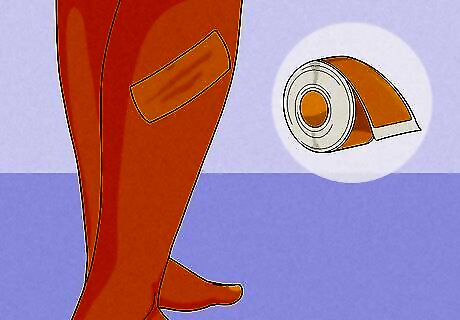
Use a silicone-based scar sheet. Silicone scar sheets are a great, innovative way to deal with scars. Scar sheets are self-adhesive, so they will stick to your skin while the silicone technology works to hydrate, soften, and fade the scars. They’re available for purchase over-the-counter online, and each box usually provides an 8 to 12 week supply. Silicone sheets have a good track record for treating scars, but it takes time and patience to achieve noticeable results. The sheets must be worn over the scar every day, for 12 hours a day, over a 2 to 3 month period.
Home Remedies for Scars
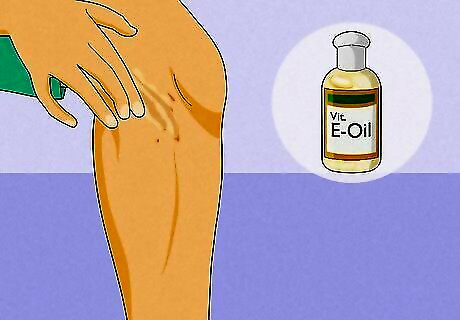
Use vitamin E oil. Though there isn’t conclusive evidence of its effectiveness, many people swear by it as a scar treatment. Vitamin E oil is very moisturizing and contains powerful antioxidants, which helps protect your skin’s cells. This may improve the appearance of your skin in general (by extension, improve your scars). Test the vitamin E oil on a small patch of skin before applying it to any large areas of skin, as it may cause an allergic reaction or contact dermatitis for some people.
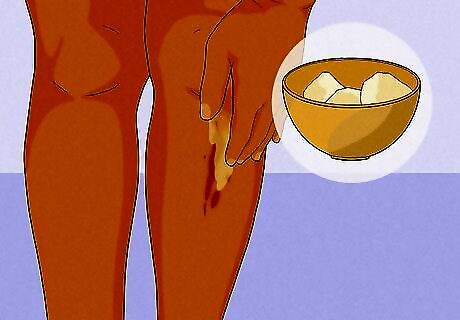
Try cocoa butter. There isn’t confirmed scientific evidence on cocoa butter’s effectiveness on scars, but it is known to be very moisturizing. It also contains the antioxidant vitamin E, so it may carry some of the same benefits as vitamin E oil. Massage the cocoa butter into the skin using circular motions, making sure that it is almost completely absorbed by the skin. Cocoa butter will be most effective on newer scars, though it’s still possible to see improvement on older scars.
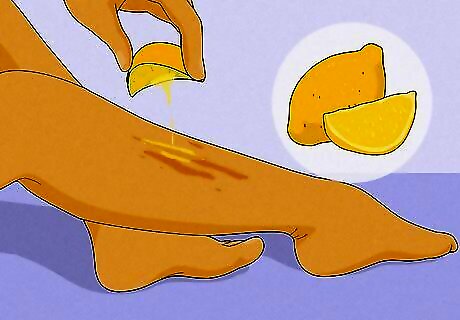
Apply lemon juice. Lemon juice is a common home remedy for scar treatment, but this method receives mixed reviews. It's believed to lessen the appearance of scars by acting as a bleaching agent and minimizing redness, but this isn't proven. This method isn't usually recommended by dermatologists, as it can be harsh and drying, especially for people with sensitive skin. If you do decide to try lemon juice on your scars, cut a small slice of lemon and squeeze the juice directly onto your scars. Leave the lemon juice on for a few hours then rinse off. Do not apply fresh juice more than once a day. If you feel the pure lemon juice is too strong, dilute it with water before applying or mix it with some blended cucumber to limit the harshness of the treatment. Rinse off lemon juice and discontinue use if you notice any skin irritation.
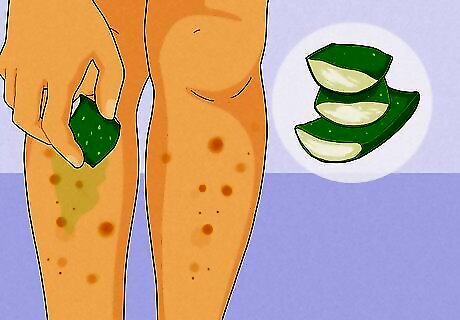
Use aloe vera. Aloe vera contains anti-inflammatory and anti-bacterial properties, making it a good option for fresh scars (though it should not be applied to open wounds). It is thought to soothe the skin and help it regenerate, which may improve the appearance of scars over time. To apply, break a leaf from an aloe vera plant and squeeze the clear, gel-like sap directly onto the scarred skin (but not on an open wound). Massage the sap into the skin using small circular motions. Aloe vera is very gentle on the skin, so you can reapply the sap up to four times a day. If you can’t get your hands on an aloe vera plant (though they should be available at most plant nurseries), there are many creams and lotions available containing aloe vera extract.
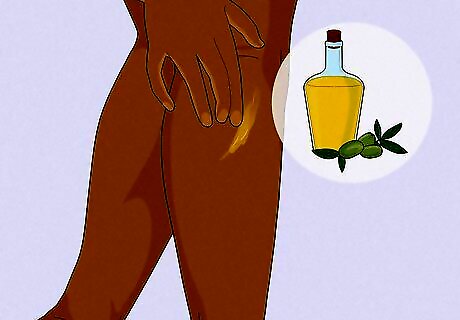
Give olive oil a try. Olive oil is another natural treatment which has been said to improve the appearance of scars. Extra virgin, cold-pressed olive oil, in particular, is believed to produce the best results, as it has a greater quantity of nutrients like vitamins E and K. Apply a teaspoon of extra virgin olive oil to the affected area and massage using small circular motions until the oil is absorbed. You can also use the olive oil as an exfoliating scrub by mixing it with a teaspoon of baking soda, which you can massage into the scars before rinsing off with warm water. A custom, nourishing oil blend can also be effective. Combine two parts olive oil with one part rosehip, chamomile, or calendula oil and apply to the skin.
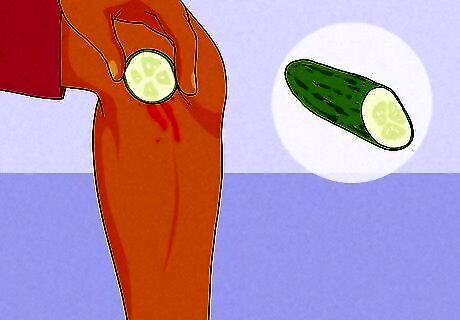
Try cucumber. Many people believe that cucumbers have a cooling and soothing effect on inflamed skin, which could potentially improve the appearance of your scar. To use, peel a cucumber, chop it roughly, and blend it in a food processor until it achieves a paste-like consistency. Apply a light layer of this paste to the scarred skin and leave it on overnight, or apply a thicker layer and wash it off after 20 minutes. Keep the remaining cucumber paste covered in the fridge for several days. Continue to apply it to the affected area each night. You can increase the effectiveness of this treatment by mixing the cucumber paste with some of the aforementioned products, such as lemon juice, olive oil or aloe vera.
Medical Treatments for Scars
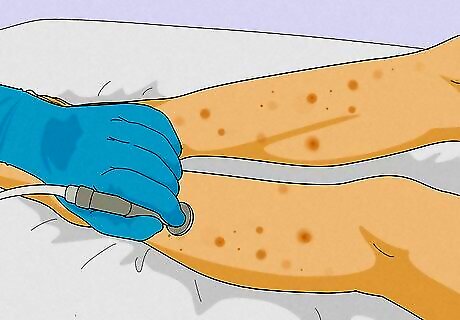
Try dermabrasion. Dermabrasion is a method of exfoliating the skin using a rotating wire brush or diamond wheel. In the weeks following the procedure, new skin will grow back, and the appearance of the scar will be greatly reduced. Dermabrasion is usually used for acne and other facial scars, though it can be performed on the legs by a qualified professional. Dermabrasion on the legs is usually only recommended for dark spots or indented scars caused by mosquito bites, etc. Keloid or hypertrophic scars (raised scars) should not be treated with dermabrasion. Make an appointment with a board-certified plastic surgeon who can analyze your scarring and decide whether you are a good candidate for dermabrasion. Be aware that these kinds of aesthetic procedures are not usually covered by insurance.
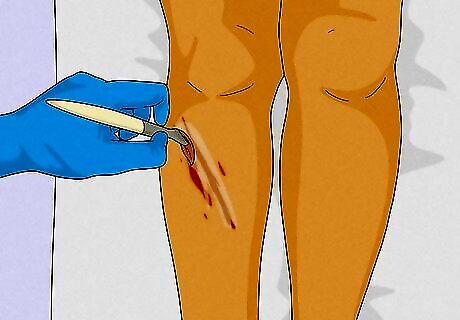
Get a chemical peel. Chemical peels are usually used to treat superficial scarring and hyperpigmentation. During a chemical peel, a dermatologist will apply a layer of acidic solution to the scarred skin and leave it on for approximately two minutes. You will experience a burning sensation, which should cease once the acid has been neutralized and the solution washed off. After the procedure, the top layers of skin will peel away, leaving smooth, new skin behind. Depending on the scarring, you may need to go through several chemical peel procedures before you see a noticeable difference in the appearance of your skin. The new skin that is exposed after a chemical peel will be sensitive. Avoid sun exposure and use sunscreen with a high SPF for several weeks to protect it.
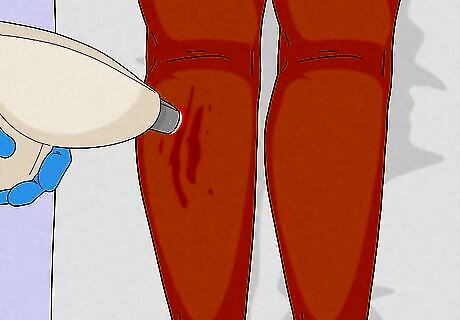
Try laser treatments. Laser therapy is a great option for improving the appearance of deeper scars. It works by burning away the scar tissue, allowing new skin to grow and replace the scarred surface. The area is numbed before the procedure, so the treatment isn't particularly painful. The laser can also pinpoint the scar precisely, so the surrounding skin remains unaffected. Laser treatment should only be received at a reputable clinic with a well-trained staff, as lasers can be dangerous if used incorrectly. You may need to return to the clinic for a series of treatments to fully remove the scar. The downside of this option is that laser treatment can be expensive, ranging from $1000 to $5000, depending on the size and depth of the scar.
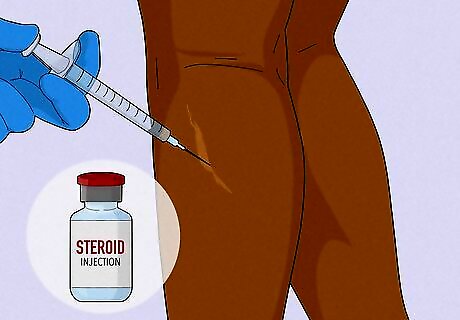
Get steroid injections. Steroid injections have been successfully used to treat keloid scars, which are notoriously difficult to get rid of. For small keloids, steroid injections of substances such as hydrocortisone are injected directly into the skin around the scar. Larger keloids are sometimes sliced or frozen off before the steroids are used. Steroid treatment is a process rather than a one-off procedure, so you’ll need to return to the clinic every 2-3 weeks to receive another injection. This treatment has a high rate of success, but is relatively costly and may cause skin discoloration or thinning. Consult with a cosmetic surgeon to decide if it’s right for you.
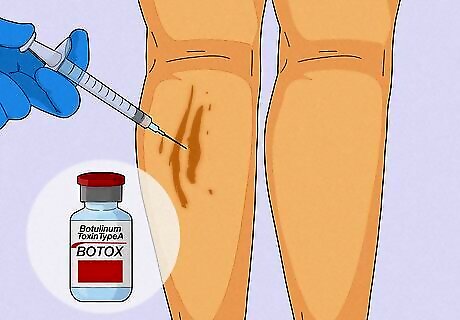
Try dermal fillers. Injections of collagen or other dermal fillers can improve the appearance of indented pockmarks and acne scars. Collagen is a natural animal protein, which is injected into the skin with a fine needle, thus filling in the indented scars. Though effective, the results are not permanent, as the body absorbs the natural collagen. You'll need to get the scar refilled after about four months. Each collagen injection costs approximately $250, so this route for scar treatment can be costly. You will need to have a skin test done before you receive any collagen injections, to ensure that you will not have an allergic reaction to the treatment.
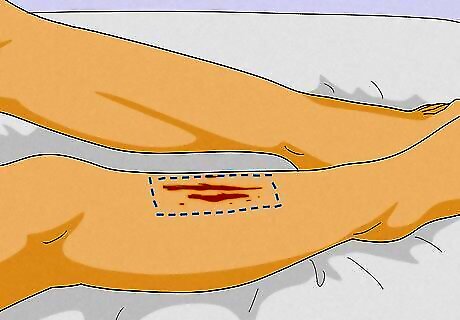
Consider surgical options. If you’re dealing with a particularly severe scar, there are surgical options available to reduce its appearance. These methods are usually reserved for scars that aren’t responding to less invasive treatments. Here are some options: Cryosurgery: involves freezing the scar to destroy the scar tissue. This method can reduce the size of raised keloid scars, and it can also relieve pain or itchiness at the scar site. Punch grafts: involves punching a hole into the skin to remove the scar, then replacing the scar with skin from another area of your body (skin graft). Scar revision surgery: a surgeon removes the entire scarred area and rejoins the skin. This procedure results in a new surgical scar, but its goal is to create a less noticeable or severe scar than you originally had.
Treating Wounds to Prevent Scarring
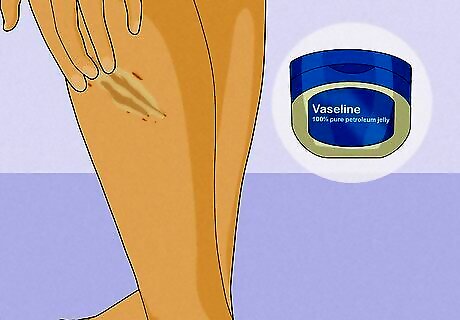
Keep your wound clean and moist. Proper wound care prevents infection and helps your skin repair successfully. This decreases the chances of scarring for minor scrapes or cuts. To ensure your wound heals well, immediately wash the area with mild, unscented soap and water, then cover it with petroleum jelly or ointment. Next, place a bandage over the area, and change it daily to keep it clean and free of germs.
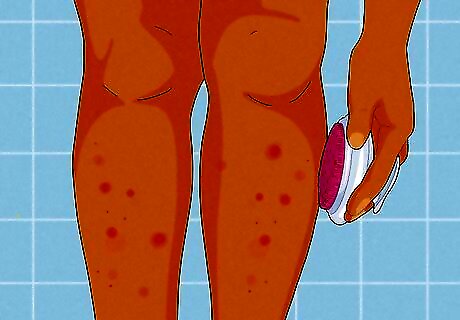
Once your wound heals, exfoliate regularly. Most scars will eventually disappear on their own as your skin sheds old layers and grows new ones. You can help this process along by exfoliating your skin regularly in the shower, using a body scrub or a bristled brush. Don’t exfoliate over fresh scars or healing wounds. Aggressive scrubbing can slow the healing process, or even make fresh wounds worse.
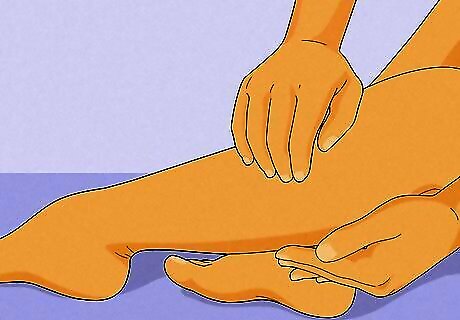
Massage your legs. Regularly massaging your legs can help break down the fibrous tissue that causes scarring. It also improves circulation, which can aid with discoloration. Massage your legs in the shower using a body brush, or use your hands to rub each leg using long, circular strokes.
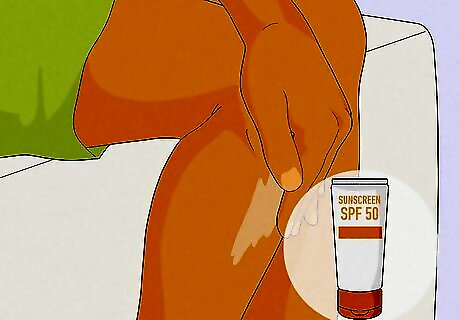
Apply sunscreen. This is one often overlooked piece of advice that can significantly reduce the appearance of scars. New scars are extremely sensitive to UVA rays, and exposure to sunlight can cause them to become much darker than they would be otherwise. Apply sunscreen with at least SPF 30 to newly scarred skin to significantly minimize discoloration.
Types of Scars
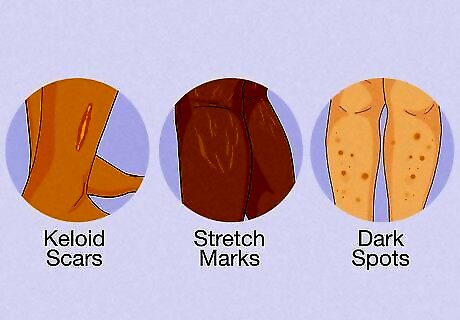
If you’re not sure where to start, assess the type of scar you have. This will help you choose the best, most effective treatment option. Study the appearance of your scar to determine which kind it is, or consult with a dermatologist if you’re still not sure. They can steer you in the right direction and come up with a plan that works for you! The main scar categories include: Keloid scars: these are large, growth-like scars that result from a wound that heals itself too aggressively. Keloid scars may grow larger over time and sometimes even return after treatment. They are particularly common in people with dark skin tones. Hypertrophic scars: these are raised scars which are initially red or pink. They will fade on their own over time. These scars may be the result of burns or surgery and can be itchy. Atrophic scars: these scars are the deep pits that are left behind after severe acne or chicken pox. Stretch marks: these are thin, reddish-purple scars which happen because of rapid weight gain or loss. They are particularly common in pregnant women. Over time, these scars will fade and become white-ish. Contracture scars: these scars are usually caused by severe burns and may cover a large area of skin. These scars may feel tight, especially if they are around the joints, and can potentially limit body movement. Dark spots: these types of marks are not actually scars, but a type of post-inflammatory hyperpigmentation, usually caused by mosquito or other insect bites.



















Comments
0 comment